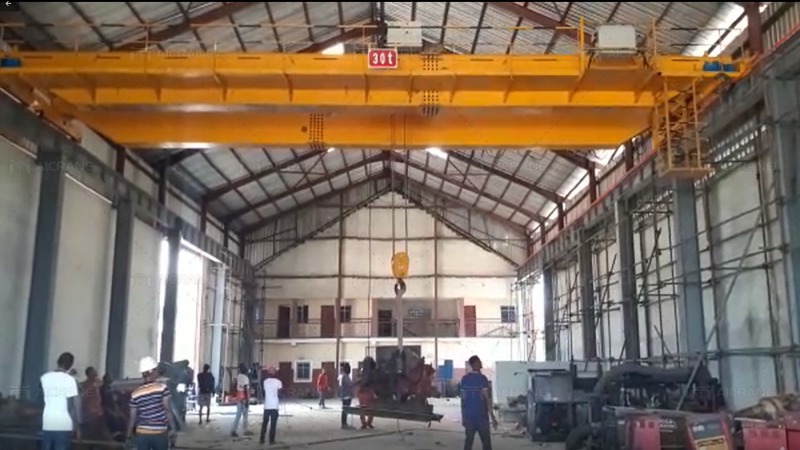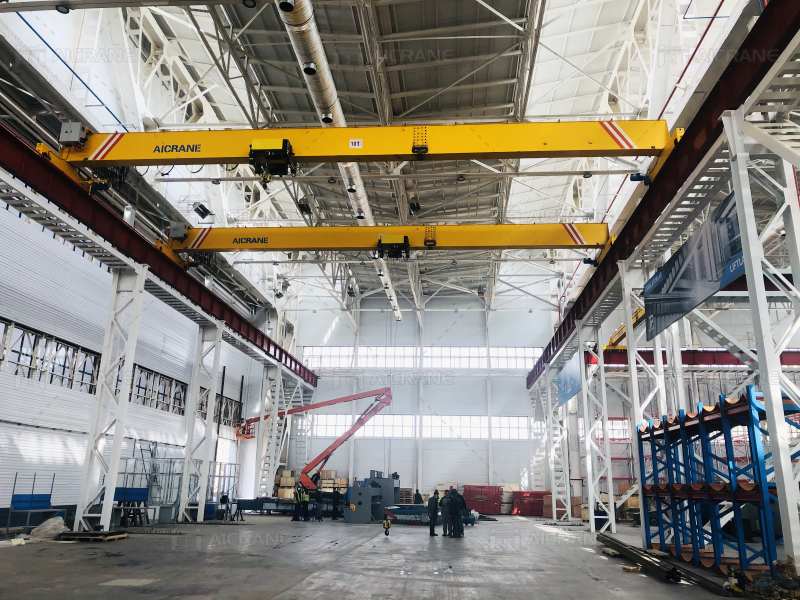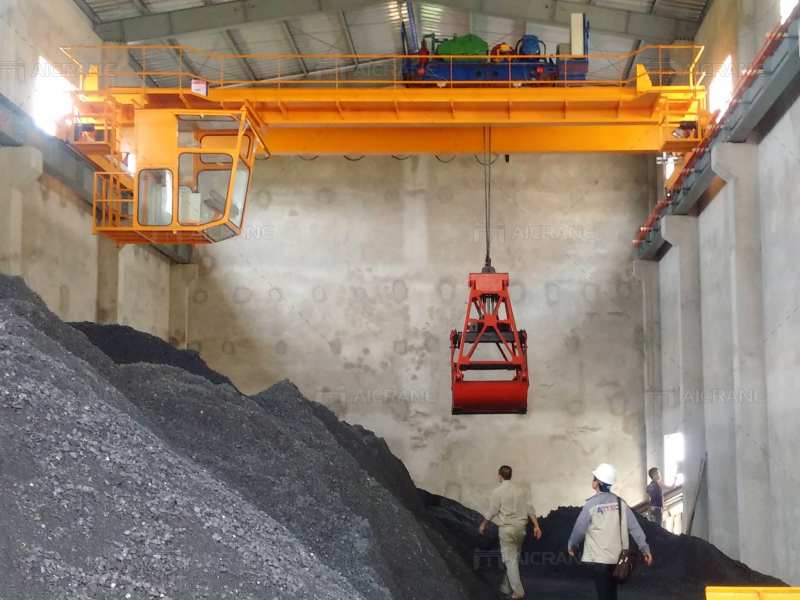Electric Overhead Traveling (EOT) cranes are vital in various industries, providing efficient and reliable lifting solutions for heavy materials. Their versatility and adaptability make them indispensable in settings like manufacturing plants, warehouses, shipyards, and construction sites. Installing and operating an EOT crane requires careful planning, precise execution, and adherence to safety protocols. This guide will explore the different types of EOT cranes, their installation process, and best practices for safe and effective operation.
Types of EOT Cranes
EOT cranes are categorized based on their configuration and specific applications. Understanding the different types of EOT cranes is essential to choosing the right crane for your needs and ensuring proper installation and operation.

Single Girder EOT Crane
Description: A single girder EOT crane features one main girder that supports the trolley and hoist. It is typically used for lighter loads and shorter spans.
Applications: Ideal for smaller workshops, warehouses, and manufacturing units where space is limited and loads are relatively light (up to 20 tons).
Advantages: Lower cost, lighter construction, and easier installation compared to double girder bridge cranes.
Double Girder EOT Crane
Description: Double girder EOT cranes have two parallel girders that provide greater stability and strength. The hoist and trolley run on top of these girders.
Applications: Suitable for heavy-duty lifting tasks, large spans, and applications requiring high lifting heights (up to 500 tons or more).
Advantages: Higher load capacity, greater lifting height, and more stability.
Underslung EOT Crane
Description: Also known as under-hung or suspension cranes, underslung EOT cranes are suspended from the roof structure and move along the lower flange of the runway beams.
Applications: Best for facilities with limited headroom or where floor space needs to be unobstructed.
Advantages: Optimizes space utilization and allows for more flexible operation in congested areas.
Top Running EOT Crane
Description: In top-running EOT cranes, the crane runs on rails mounted on the top of the runway beams. This configuration is common in heavy-duty applications.
Applications: Ideal for large-scale industrial operations, including steel mills, power plants, and heavy machinery manufacturing.
Advantages: Capable of handling extremely heavy loads with high precision.

Explosion-Proof EOT Crane
Description: Designed for environments where there is a risk of explosion, such as chemical plants or oil refineries, these cranes feature explosion-proof motors, electrical systems, and components.
Applications: Used in hazardous environments with flammable gases, dust, or vapors.
Advantages: Ensures safe operation in explosive atmospheres.
No matter what types of eot cranes you are searching for, you can just find the suitable and reliable one from Aicrane company.
Installation Process of EOT Cranes
The installation of an EOT crane is a complex process that requires detailed planning, skilled labor, and compliance with safety standards. The following steps outline the typical process for installing an EOT crane:
Site Assessment and Planning
Initial Survey: Conduct a thorough assessment of the installation site, considering factors like building dimensions, floor strength, headroom, and potential obstructions.
Design Considerations: Develop a crane design that meets the specific requirements of the site, including load capacity, span length, and lifting height. Consult with structural engineers to ensure the building can support the crane’s load.
Regulatory Compliance: Ensure that the crane installation complies with local building codes, safety regulations, and industry standards.
Foundation and Structural Preparation
Runway Beams Installation: Install runway beams that will support the crane. These beams must be perfectly aligned and securely anchored to the building structure.
Foundation Work: Prepare the foundation for the crane’s supporting structures, such as columns or gantry legs, ensuring they can bear the weight and dynamic loads of the crane.
Crane Assembly
Component Delivery: Arrange for the delivery of crane components, including girders, trolleys, hoists, and electrical systems, to the installation site.
Assembly: Assemble the crane on-site or pre-assemble parts off-site, depending on the crane’s size and the site’s constraints. This may involve welding, bolting, and other mechanical connections.
Alignment and Calibration: Carefully align the crane components to ensure smooth operation. Calibrate the hoist and trolley systems to achieve the desired precision in lifting and movement.

Electrical Installation
Power Supply: Connect the crane to the facility’s electrical system, ensuring that the power supply is adequate for the crane’s motor and control systems.
Control Systems: Install and test the control systems, including remote control units, limit switches, and emergency stop functions.
Safety Systems: Implement safety features such as overload protection, anti-collision devices, and emergency stop mechanisms.
Testing and Commissioning
Load Testing: Perform load tests to verify that the crane can safely lift and move the maximum rated load. Conduct these tests under the supervision of certified inspectors.
Operational Testing: Test the crane’s operational systems, including movement along the runway, hoisting, and trolley travel, to ensure smooth and accurate operation.
Final Inspection: Conduct a final inspection of the crane and its installation to confirm compliance with safety standards and operational requirements.
Operating Different Types of EOT Cranes
Operating an EOT crane requires training, knowledge of the specific overhead crane type, and adherence to safety protocols. Here are best practices for operating different types of EOT cranes:
Pre-Operational Checks
Inspection: Conduct a thorough inspection of the crane before each use. Check for any visible damage, wear, or malfunctioning components.
Load Capacity Verification: Ensure that the load to be lifted does not exceed the crane’s rated capacity. Overloading can lead to accidents and equipment damage.
Safety Systems Check: Verify that all safety systems, including limit switches, emergency stops, and load indicators, are functioning correctly.
Safe Lifting Practices
Load Securement: Properly secure the load using appropriate lifting gear, such as slings, hooks, or magnets. Ensure that the load is balanced and stable before lifting.
Controlled Movements: Operate the crane controls smoothly to avoid sudden jerks or swings. Use slow speeds when lifting, lowering, or moving loads horizontally.
Communication: Maintain clear communication with other workers involved in the lifting operation. Use standardized hand signals or communication devices to coordinate movements.
Avoiding Common Hazards
Obstacle Awareness: Be aware of any obstacles in the crane’s path, including other machinery, structures, or personnel. Use anti-collision devices if available.
Load Swing Prevention: Use anti-sway controls if the crane is equipped with them. If not, minimize load swing by carefully controlling the crane’s speed and movement.
Emergency Preparedness: Be prepared to stop the crane immediately in case of an emergency. Familiarize yourself with the crane’s emergency stop functions and evacuation procedures.
Post-Operational Procedures
Shutdown: After use, return the crane to its designated parking area and shut down all systems. Disconnect the power supply if required.
Maintenance Reporting: Report any issues or maintenance needs identified during operation to the maintenance team. Regular maintenance is crucial for the longevity and safe operation of the crane.
Documentation: Record details of the crane’s use, including load weights, operational hours, and any incidents or abnormalities, in the crane’s logbook.
Installing and operating EOT cranes requires careful planning, adherence to safety protocols, and a thorough understanding of the specific crane type. Whether you are working with single girder, double girder, or specialized cranes like explosion-proof models, following the proper installation and operational procedures ensures efficient, safe, and reliable crane operations. As industries continue to rely on EOT cranes for heavy lifting and material handling, the importance of skilled installation and operation cannot be overstated. By following this guide, you can maximize the performance and safety of your EOT crane, ensuring it meets the demands of your industrial environment.